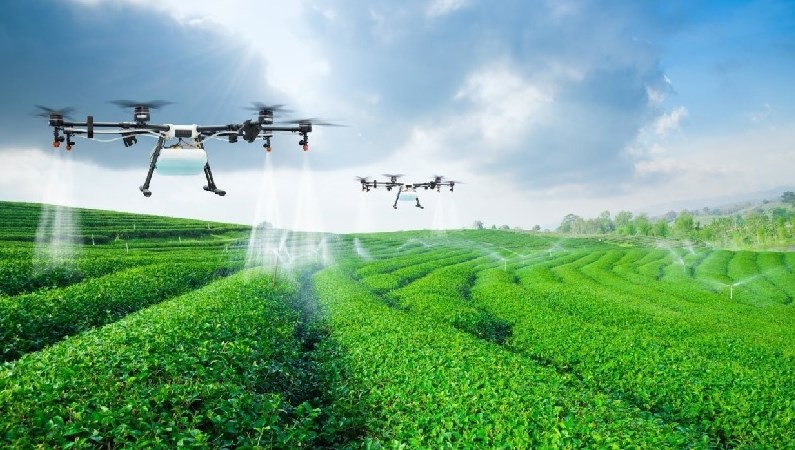
Cannabis and CBD products have become extremely popular and widespread in recent years. The last decade was a real game changer for the legal cannabis industry, with states legalizing marijuana for recreational and medical purposes.
When cannabis products appeared on the market, they caused numerous scientific studies and breakthroughs. Today cannabis industry is huge with oils for vaping, capsules, edible gummies, etc. Today we are in a new era of cannabis use. For example, the cannabis industry is a $28.06 billion market today. There are estimates that the industry will reach over $197.75 billion by 2028.
As you can see, it is an industry with bright perspectives and science. Studies can bring more efficient and safe products to the market. Technologies will play a very significant role in the cannabis industry. So it’s time to find the potential and role of technology in the cannabis business. We will tell you about the possible changes that technologies can bring to the cannabis industry.
Personalized Products
Finding the right product cannabis product and the right blend of THC and CBD can be complicated. Every person has a unique biochemistry, and cannabis affects them differently. Different strains might have a reputation for intensity, like the Wedding Crashers strain or mellowness. However, there is always wiggle room in selecting what to consume.
All cannabis consumers should pay attention to their choice of strain because marijuana is a psychoactive substance, and if you choose the wrong strain, it might lead to feeling down. That’s where technology might help us. The next step in marijuana consumption is creating cannabinoid mixes that fit your unique physiology.
Some cannabis companies are developing this method of personalization. Retailers might predict your compatibility with numerous strains and help you to choose the best one. In the future, cannabis retailers might use this method to deliver the perfect experience to consumers.
Cultivation
Cannabis growers invest a lot of funds in cultivation practices. Their main goal is to lower operational costs, increase cannabinoid levels, and speed up harvest time. A good plantation will have a better result. The main goals of technological innovations are:
- Receive a better variety of cannabis strains;
- Lower water consumption;
- Innovations and improving lightning and electricity consumption;
- Waste disposal.
There are many examples of how innovations improve plantation results and help growers to receive better results. For example, LED technologies modernize the processes of indoor growing on a large scale. Another example is planetary remote sensing technologies that provide insight into cannabis farming.
Genetic Engineering
The third variant of how technology can change the industry is DNA sequencing. Growers have been experimenting with strains, selecting phenotypes for better results for decades. With gene editing technology, years of effort can take weeks to create new strains.
This technology directly changes the DNA of cannabis, but it doesn’t add any foreign DNA. So it isn’t like GMO editing. Breeders have been creating and shaping the DNA structure of plants for many years. Some say that marijuana is the most hybridized and crossed plant globally. So there is nothing wrong with improving the results we have now. There are a lot of advantages of this method. For example, they could be:
- Disease resistance;
- Pest resistance;
- Climate Tolerance;
- Terpene and cannabinoid selection;
- Increase trichomes;
- CBD/THC ratio;
- Biomass improvement.
Efficient Growing Lights
We have already mentioned LED light, but it is a significant issue that might change the industry in the future. Cannabis plants have a huge appetite for wide-spectrum light. In its natural area, the sun delivers everything that plants need. However, if you grow cannabis indoors, you need many expensive discharge bulbs that consume a lot of electricity.
LED technology has changed the game in home lighting in recent years. It is going to do the same in the cannabis industry. Many cannabis growers have already used this technology. It allows delivering a wideband light spectrum. Directional lamps are also more efficient at pointing lights at the plan. LED lamps consume less electricity and produce less heat, allowing temperature control.
Nanoencapsulation
One of the biggest problems with CBD products is their chemical nature of CBD. It is an oil, and it isn’t water-soluble. It means that oil will separate from any liquid over time. This obstacle limits the use of oils and capsules. The key point is to add it to water-based products like beverages. That’s where nanoencapsulation can help us. When you consume CBD orally, only 20% goes into your bloodstream.
Scientists think encapsulation of cannabinoids in a smaller emulsion can improve this situation. It can also allow the CBD to blend with water. The technology is at its start, but it can show impressive results in the future. If such a technique is successful, we can wait for many beverage makers to start producing cannabis products.
Summary
It isn’t the full list of possible technologies that can change the rules of this market. The industry is growing and developing continuously, so we can expect more ways to change the market.

Taylor is a freelance SEO copywriter and blogger. His areas of expertise include technology, pop culture, and marketing.











